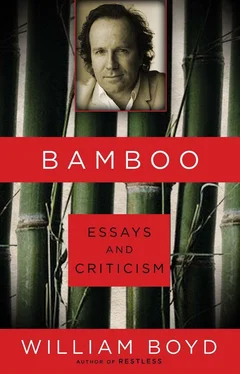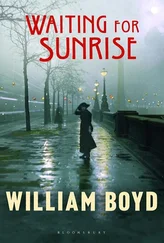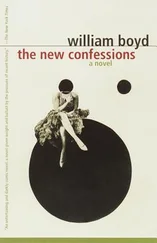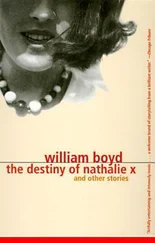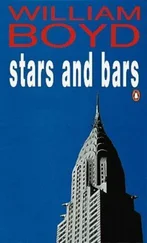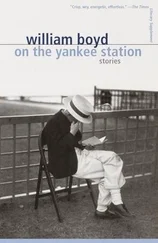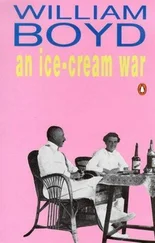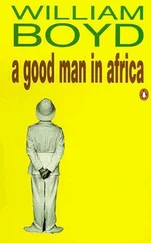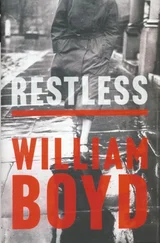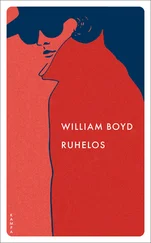As the time came for our transition to the main school a certain tension became evident in those about to make the move, uneasy at the idea of exchanging a small pond for a much larger one in which we would be conspicuous minnows. There was a rite of passage that took place in the final week of our final term and which symbolically marked this impending alteration in our status. It was known as “P.D.” and was a one-on-one solemn discussion with the headmaster about the facts of life.
The initials referred to “Pandrops”—a name peculiar to Scotland, I believe, which was given to a brand of large round white peppermints. These the headmaster would feed the boy throughout his faintly embarrassed disquisition in the strange belief that the peppermint would prevent any unseemly arousal. Where he discovered this faith in the anaphrodisiac properties of peppermint I have no idea, but anyway, there one sat, dutifully sucking on a succession of mints, as he tediously ran us through the familiar mechanics of procreation. At the end he would ask peremptorily: “Have you any questions?” This was what we were waiting for, the tacit understanding being that the headmaster was duty-bound to answer everything — everything — we wanted to know. Consequently medical textbooks, dictionaries and novels were scoured in advance for sexual arcana: “Sir, what are the symptoms of tertiary syphilis?” “How do you do soixante-neuf, sir?” The aim was to make the P.D. session last as long as possible, a fact which, rather than displaying the appalling extent of one’s ignorance, was instead perceived to convey the impression of massive virility. There was a record for the longest P.D. — an awesome interrogatory effort which had endured for most of an afternoon, was abandoned and resumed after breakfast the next day — but no one in my year lasted much more than an hour.
So I left the world of the prep school after four years and everything changed, but my memories of that period of my life seem fixed and anchored in my first year at Wester Elchies; perhaps because of my coming from Africa everything about it was so strange and new and its impact inevitably left deeper traces. Recollections of my first summer there are particularly resonant because by then I had settled in, I had explored my world and was at home in it. And, I suppose, I was happy. It was a kind of idyll living in that remote and rather beautiful Scottish estate, for all its strangeness. I remember on summer nights after supper we would gather around the teachers sitting out on the grass tennis court, lounging beneath the cedar tree (or was it beech, or have I just planted it?), pestering them, chatting and playing, before the bell was rung and we were summoned inside for prayers, then bed. A wash and a teeth clean standing on the wooden duckboards in the washroom, then into the cool dormitory high under the eaves of the house. Lights out at 8.00, not that it made much difference, the thin curtains drawn vainly against the sunny northern skies. In reality I couldn’t have spent more than a few dozen summer evenings at Elchies but it is that particular limpid northern atmosphere — the sun still stubbornly in the sky but the shadows long and with the warmth just beginning to go — that my memory most associates with the place and that time of my life. The ambience is always conjured up by Auden’s haunting poem, “Summer Night,” written — coincidentally — while he was teaching at a prep school in Scotland himself:
That later we, though parted then,
May still recall those evenings when
Fear gave his watch no look;
The lion griefs loped from the shade
And on our knees their muzzles laid
And Death put down his book.
1998
I have known few large buildings as intimately as I knew my house at school; after all, I lived there, day in, day out, for five years. All public schoolboys can claim a similar familiarity, but in almost every case you will find there is no nostalgia for the building itself. Apart from my parental home I have never lived in any one house for longer than three years, but I remember the shabbiest and most transient student bedsits with more affection. It is not all that surprising: the living quarters of your average public schoolboy are at best functional and soulless, and at worst utterly disgusting. If Borstals or remand homes were maintained in similar conditions, there would be a public outcry. I recently visited several famous public schools, and nothing I saw there made me so depressed as the dormitories and the thought that for so many years I had slept so many nights in such dismal and depressing circumstances.
It is, I think, a retrospective revulsion. Adolescent boys are not much preoccupied with personal hygiene, let alone the care and maintenance of their living quarters. But now, when I recall the concrete and tile washrooms and lavatories, the pale-green dormitories with their crude wooden beds, I form a new respect for the resilience and fortitude of the adolescent spirit.
Not that the conditions we experienced at school were the worst I have seen. At one school that I visited in Scotland some of the studies were in a converted greenhouse, which the boys had lined with egg boxes in an attempt to provide some insulation. Older buildings in older schools give rise to prospects of damp and decay that are almost Dickensian in their extravagance; the dormitories look like wards in some Crimean war hospital.
Anyway, we were fortunate, if that is the right word, in that our house was newish and made of wood. It looked rather like an army barracks, a large, single-storey frame building, creosoted brown, with a tar-paper roof, constructed around a square, grassy courtyard. There were four very long terraced corridors with rooms off each side. One edge of the square expanded to contain a large locker room, towel and shower room and lavatories; one corner contained the housemaster’s flat. We ate in a dining room a mile away in the main school, an old, rather attractive, stone manor house whose fine architectural proportions had suffered when a Second World War fire destroyed its mansard roof.
When I arrived at the school, aged thirteen, in 1965, everything about the house was functional and anonymous. The floor, throughout, was brown linoleum; the lampshades were white plastic. Curtains at dorm windows were made from the same drab material. Only in the studies was individual decoration permitted, but as this consisted almost entirely of pictures of women scissored from lingerie and swimwear advertisements, they too had a homogeneous air.
Prospective parents being shown round the house often found the unrelieved wallpapering of brassière and corset ads (interspersed with the odd film star or motor car) something of a shock, and from time to time the housemaster or the headmaster would initiate a clean-up campaign. Shortly after I arrived new regulations were issued. (1) Nudity was banned. Even the most decorous and coy picture from a girlie magazine (or nude mags, nude books, skin mags, as we called them) was not permitted: the pin-up must be clothed. (2) Only three pin-ups were allowed on the wall per person. (3) As a special concession, a fourth pinup could be kept concealed in a drawer for furtive, private consultation. This is true.
It was vain legislation and constantly had to be reinforced. But as years went by attitudes relaxed, and by the time I left every boy’s study looked like a Soho bookshop or soft-porn emporium. Indeed, in terms of fixtures and fittings the history of my house, and of all the other six houses in the school, was one of prettification and improvement. Carpets were introduced; studies were subdivided into cubicles or converted to study-dormitories; painting and wallpapering were encouraged. Taste, as might be expected, was execrable. I remember that in one of my studies we lowered the ceiling by two feet by tacking string to and fro from one wall to another and laying brightly coloured crêpe paper on top of the resulting web. In the five years I lived there the character of the house altered by stages from that of some sort of penal institution to that of a moderately prosperous South American shanty town.
Читать дальше
